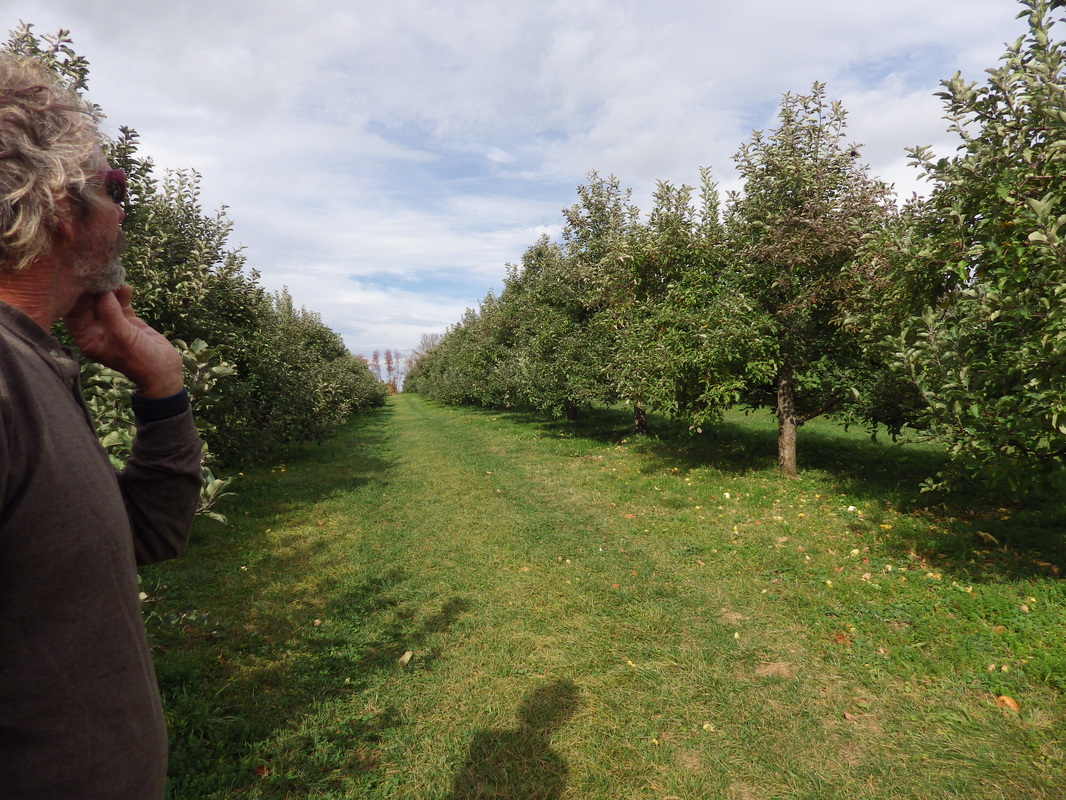Turns out that the weather wasn't especially willing. All over the North Country, it was the same sad story: not a great summer for fruit. The apples were sparse, sour, and small. Why? Who knows...Too cold last winter? Japanese beetles? Too wet? Too dry? No one could say; it was just one of those seasons. We did, however, visit a wonderful commercial orchard near Shoreham Village, Vermont. They weren't taking any guff from Mother Nature this year.
When we returned to the Farm, we knew it was time to get brutal. Time to recognize that some of the trees were going to have to go. Time to turn apple trees into apple wood. We amputated big chunks of canopy throughout the groves and we nipped about 700 sucker-sprouts. And we chopped down whole trees -- oak and honeysuckle, juniper and black locust as well as a few unlucky apple-trees. We cut so much that -- if we but had the skills -- we could construct two or three new orchards from what we trimmed.
We stacked the wood (sorted by species) at every corner of the groves. It's not a practice that commercial growers would follow because dead wood can harbor pests and disease. But commercial growers nearly always have a tractor or a team of draft horses or something to carry things out of the groves. We have a chainsaw, a heavy-duty weed whip, some loppers, and two willing workers. And only so many hours of the day. The wildlife can nibble on the twigs this winter. Maybe we'll get a tractor-like vehicle to haul things sooner rather than later. Meanwhile, even if the apples fail to appear next year, we'll have a good crop of well-seasoned apple-wood.
4 Comments
Greg
11/11/2014 02:41:46 am
Apple wood coals are good to cook meat over. A nice low heat till done. On our camping trips we burn a fire hot then shovel the coals to a separate cooking area between two logs and place the grill over the coals. Sit by the fire cook on the grill. It doesn't get any better. It will take a few years to get the trees in shape. Heres some reading. http://www.organicgardening.com/learn-and-grow/heirloom-apples
Reply
Amy
11/12/2014 12:17:51 am
Thank you Greg!
Reply
edgar meyer
11/11/2014 11:52:08 pm
The great fun adventure, and autumn means no bugs in God's country. When Jeff publishes Tips for Downwind Sailing and Sawblade Sharpening, I am At the bookstore .
Reply
Amy
11/12/2014 12:20:53 am
Hi Edgar --
Reply
Leave a Reply. |
About the Blog
A lot of ground gets covered on this blog -- from sailboat racing to book suggestions to plain old piffle. FollowTrying to keep track? Follow me on Facebook or Twitter or if you use an aggregator, click the RSS option below.
Old school? Sign up for the newsletter and I'll shoot you a short e-mail when there's something new.
Archives
June 2024
Categories
All
|

 RSS Feed
RSS Feed
